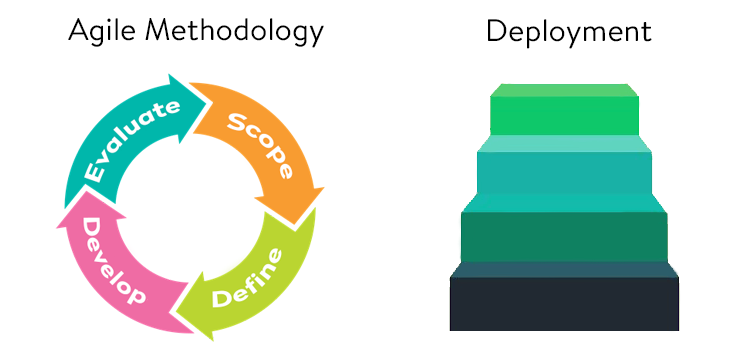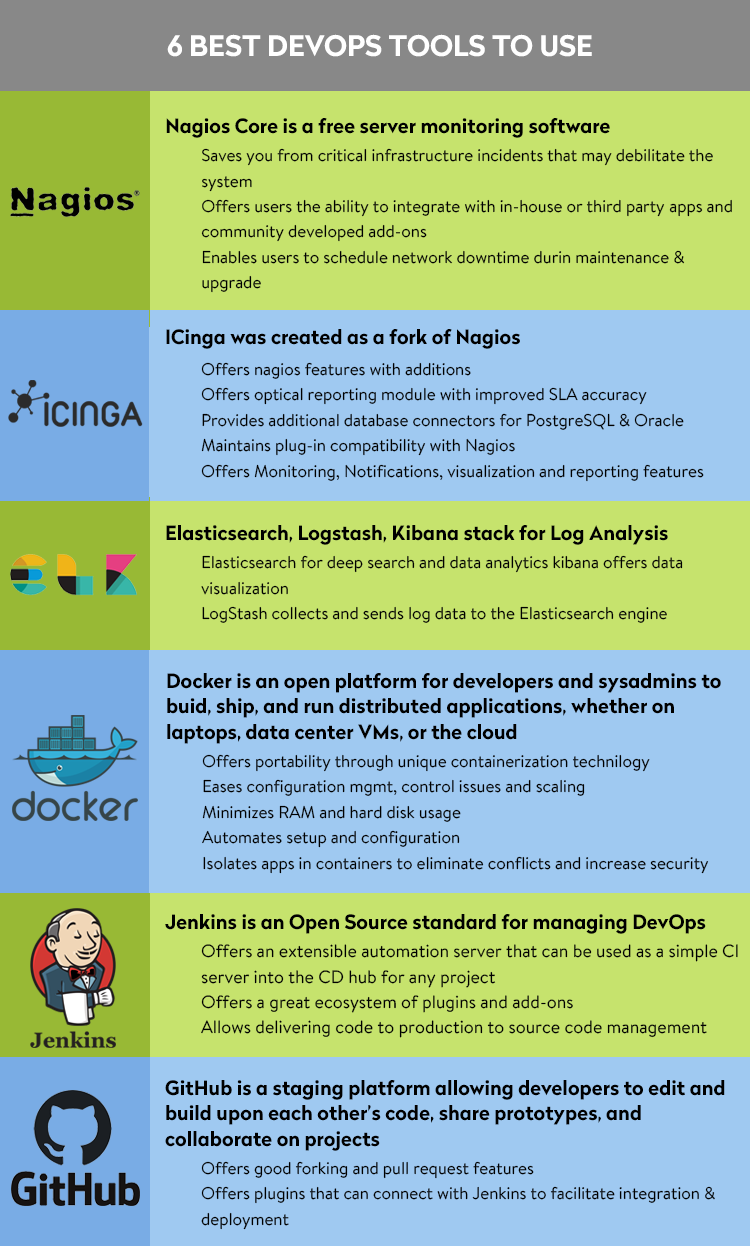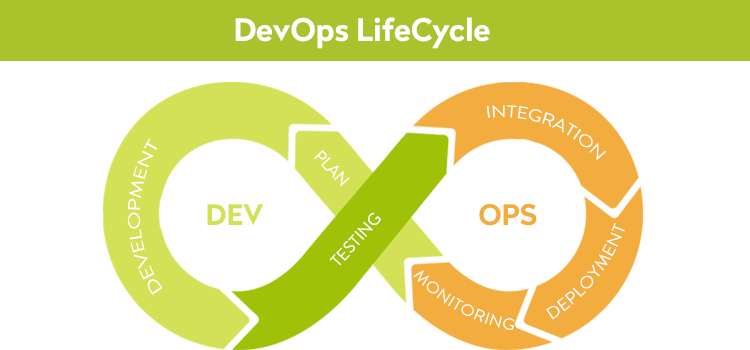What is DevOps?
Before DevOps, operators, and developers had quite a contention. Developers used to pass their code to operators, and they were responsible for keeping it running. Operators didn’t have enough knowledge of codebases, and developers didn’t have enough knowledge of operational practices. Basically, developers were dealing with features, and operators were dealing with stability, meaning developers wanted to move faster so as to get their features out faster and the operators wanted to move slower to keep things stable. This kind of relationship often caused tension within the organization. So DevOps is a set of practices designed to break down the barriers that are in the way of a greater collaboration of developers, operators, and other parts of the organization. It is a combination of the development team with the operations team which in return will improve collaboration between the development and deployment teams, internal communication, and productivity. And all of this can be done by automating workflows and infrastructure, continuously measuring app functioning and quality.Before DevOps
 The agile methodology shows the way to develop software and applications with a continuous development cycle but often ignores deployment. As a result, development can be continuous but deployment is an old school like waterfall.
The agile methodology shows the way to develop software and applications with a continuous development cycle but often ignores deployment. As a result, development can be continuous but deployment is an old school like waterfall.
| Traditional IT | DevOps | |
|---|---|---|
| Build Size | Here the firm often goes with a bigger build size which is good only if a project is simple and easy-going. | This solution, on the other hand, believes in smaller build sizes. The smaller the build size, the smaller the risk of failure. |
| Organizational Silos | Traditional IT organize the sitting arrangement based on skills, which means that the developers having the same knowledge will sit together. | Agile organizations arrange their employees based on projects, not skills. It helps developers, QA engineers, project managers, etc. to collaborate more efficiently |
| Scheduling | Here the scheduling is centralized and common for all the team members regardless of their job intensity. | DevOps believes in local or cell level scheduling. It helps team members to identify their deadlines better and work accordingly. |
| Release | The release of software in traditional IT is a high-risk event as it’s always filled with issues and escalations. Because of this, constant fire-fighting happens between the high and low levels. | Organizations with this approach make software releases a non-event. Because of the smaller build size, high collaboration, and continuous integration of code build release is risk-free. |
| Information Focus | Traditional IT focuses less on information as a massive report of requirements is gathered and generated by the operations team. Data presented in this form becomes less consumable and hence less actionable. | In this case, it is the project team who gathers information from the client and consumers themselves. It saves the time to create a lengthy report as now teams don’t need to take approvals from managers and wait for their emails. |
| Project Metrics | Traditional IT considers only the cost and capacity as measurements, which means for a certain project size, what should be the cost. | This kind of organizations also consider flow along with cost and capacity. Considering “flow” helps agile teams to calculate end-to-end cycle time and not the overall time. It helps them to calculate total “productive” time. |
 DevOps is a development plus operations working together to achieve a common goal of continuous development and deployment.
The main goals of DevOps are:
DevOps is a development plus operations working together to achieve a common goal of continuous development and deployment.
The main goals of DevOps are:
- To improve code quality.
- To integrate continuously.
- To deliver faster.
Read also: DevOps vs Agile: Myth-busting.
DevOps Tools
DevOps encourages automation of change, configuration, and release processes by using tools like:
DevOps LifeCycle
To be able to use DevOps as a Service it is necessary to understand DevOps LifeCycle.Plan
The first step would be to plan the development of the DevOps process by dividing them into smaller development cycles.Development
The development process is faster because now developers need to execute the development process in little cycles defined earlier.Testing
In this stage, the QA team will test every piece of code with advanced automation testing tools and suggest bug fixes for each piece.Integration
Here, the developers will integrate fresh functionality with the existing code. And this is how continuous integration and continuous development happens.Deployment
In this stage, the deployment is done on a continuous basis. It will allow developers to make changes in the existing app without disturbing its functionality.Monitoring
In this stage, the operation team will have to care for system behavior proactively and check if it has any bugs.
DevOps Process Flow
The goal of the DevOps lifecycle is to add agility in development with the help of automation in different processes. Process flows essentially drive the production environment by fixing the breach between the development and operations team by using continuous integration, deployment, delivery, and feedback.Continuous Integration
Continuous Integration (CI) is a process where developers are able to update parts of code in a storage space that is shared with the whole project team. Here the code’s validation and testing happen automatically. This storage space is useful in reducing delays because any team member is able to find the most recent and confirmed version of the code at any time.Continuous Delivery
Continuous Delivery (CD) is what logically comes after CI. With the help of the CD operations, teams are able to automatically build, test, and pack the code changes during CI for release. CD automates the software delivery process for quicker releases.Continuous Deployment
Continuous Deployment is different from CD because it is a process where no human involvement is necessary. DevOps uses tools to automate the tests and release of the code. It’s released as soon as the tool finds a change in the code. Continuous Deployment removes the need to schedule release dates and makes the feedback loop work quicker.Continuous Feedback
Continuous Feedback is a process which uses tools to help the operations team to find bugs in a system and update the development team about them right away. It guarantees better reliability and stronger security of the software.DevOps Principles
There are 6 main principles you should take into consideration.#1 Customer-oriented
DevOps organizations should always think about customers’ needs and continuously expand services and products in a way that adds value to their business.#2 End-to-end responsibility
The team is responsible to supply its clients with high-quality products and full support until the product’s end date.#3 Continuous Optimization
This approach implies continuous optimization. For this purpose, it has the CI/CD process which minimizes development time and cost.#4 Automation is the key
Automation is at the heart of DevOps. This approach cannot exist without automation, which improves the efficiency of software development.#5 Teamwork
The teamwork is encouraged. A team (designers, developers, and QA engineers) should arrange daily sprints for better collaborative work.#6 Testing and Monitoring
Also, this approach values continuous improvement, teams should test and monitor the product on a continuous basis.What is DevOps as a service?
Now that we get the picture of what DevOps is, let’s dive deeper and explore the term DevOps as a Service (DaaS). DaaS is a delivery model that in its core implies to store all the development tools in the cloud platform to make certain that developers use a common toolset and all of the actions are tracked. By choosing DaaS, you get tools for your project that can automate deployment cycles across the software delivery infrastructure. DevOps engineers supervise the product’s journey from the start to the end and make sure that everything goes as smoothly as possible. They know what systems and tools are suited exactly for your project and know how to use them to your benefit. So the process of development of a product becomes faster and more convenient.DevOps as a Service: 7 Reasons to use
Cloud deployment in itself has a lot of advantages, but right now let’s explore what are the unique benefits of using DaaS:- Collaboration with cloud-based DevOps is a much easier experience, all the tools that were put in the cloud platform are open to access by users anywhere.
- With using DaaS, comes fast testing and deployment. Usually, with the use of cloud services, release frequency increases. Developers obtain more computing power and data storage.
- It simplifies the complexities of data and information flow. Team members are able to focus on their specific tools with no need for knowing how the whole toolchain works. A software developer can be running tests with the help of source code management tools, and an IT operations manager is able to make changes with the help of configuration management tools.
- By using DaaS, you get fast access to professional DevOps engineers, which are able to provide you with their expertise to your project right from the start.
- With DaaS, you get a dedicated DevOps team that provides developers with documentation and mentorship for helping your in-house IT department to learn new tools and systems.
- By choosing this solution, you are not obligated to get rid of your internal DevOps deployment process. With DaaS, you just make it easier to offload varied units of a project for more convenient collaboration and quicker turnaround.
- By using cloud services, everything becomes more data-driven so the team uses the same dataset. This service provides better documentation and quality control.
DevOps as a Service: Disadvantages
Now, everything in this world needs balance, there’s no such thing as a perfect solution to all of our problems. There’s no doubt that DevOps as a service is a good approach, but it also has its weak spot. So, let’s find out what are the disadvantages of Daas:- To be able to outsource a DevOps infrastructure, you will need to have a particular degree of software development expertise. Also, make sure you understand the integration, infrastructure, and operating workflow on a high level. This means, that you probably are going to need to hire experts along with the tools for DaaS.
- DevOps usually prioritize speed over security when developing software. The use of cloud services may cause some security risks. However, you can ask the DevOps team to pay more attention to security.

